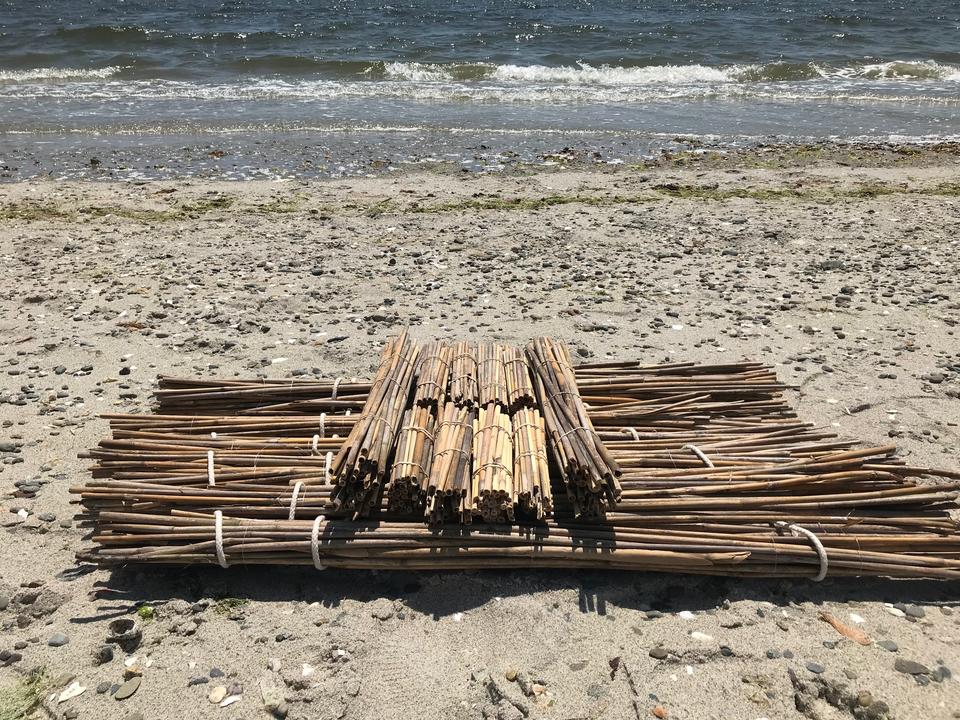Image
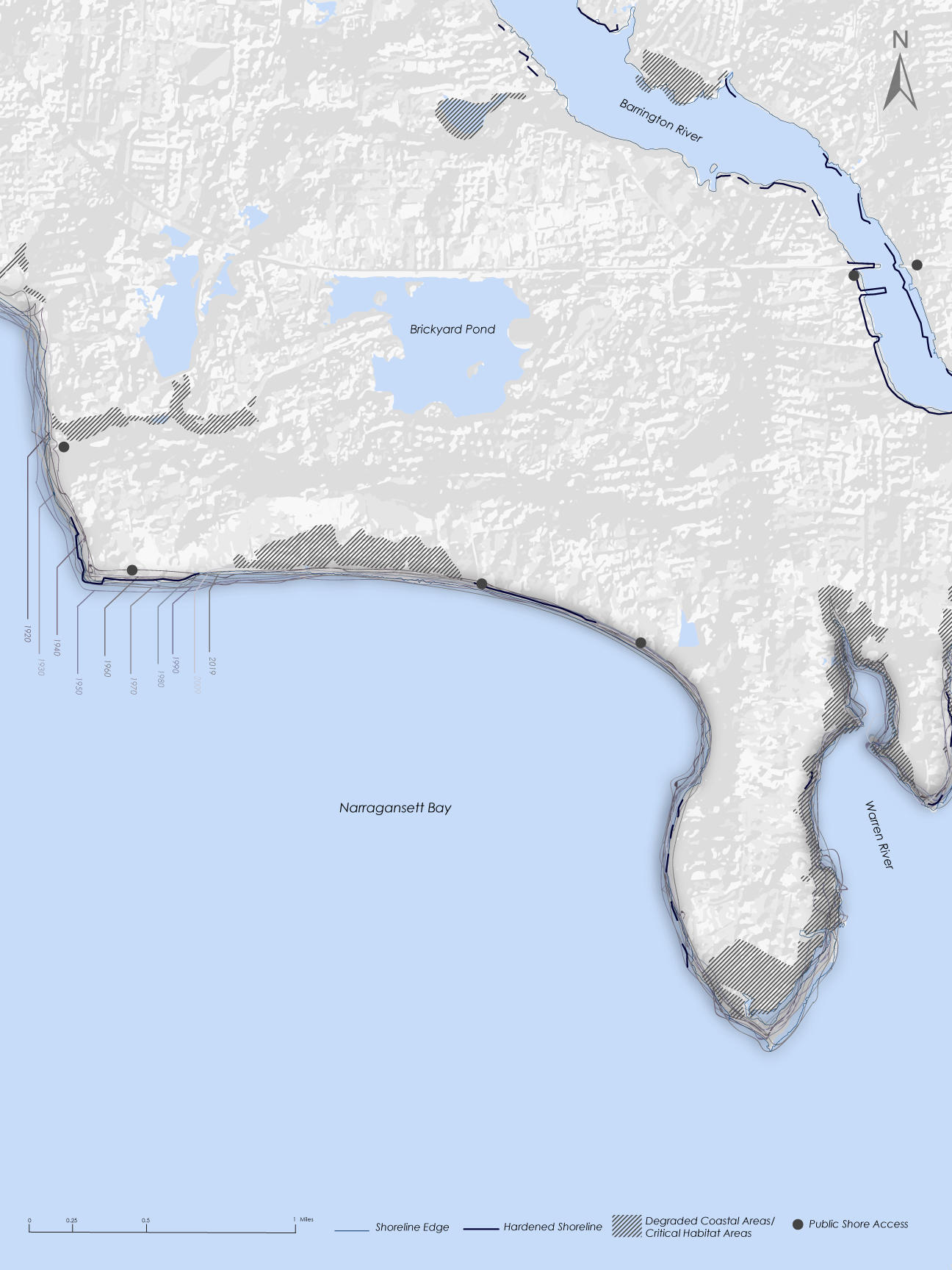
Mariesa Travers
On the Edge of the "Er-Ocean" State
This thesis explores how hard coastal infrastructure methods can be redesigned by softening the coastal edge to support the ecosystem and enhance public access to the beach. By referencing and arguing against techniques used by the U.S. Army Corps of Engineers (USACE) as a solution to deal with coastal erosion, this process will propose a regenerated design system. Through a series of material experiments, this proposal will work with natural processes and flows, to create transitory systems that instinctively erodes and ends with the coast.
Image
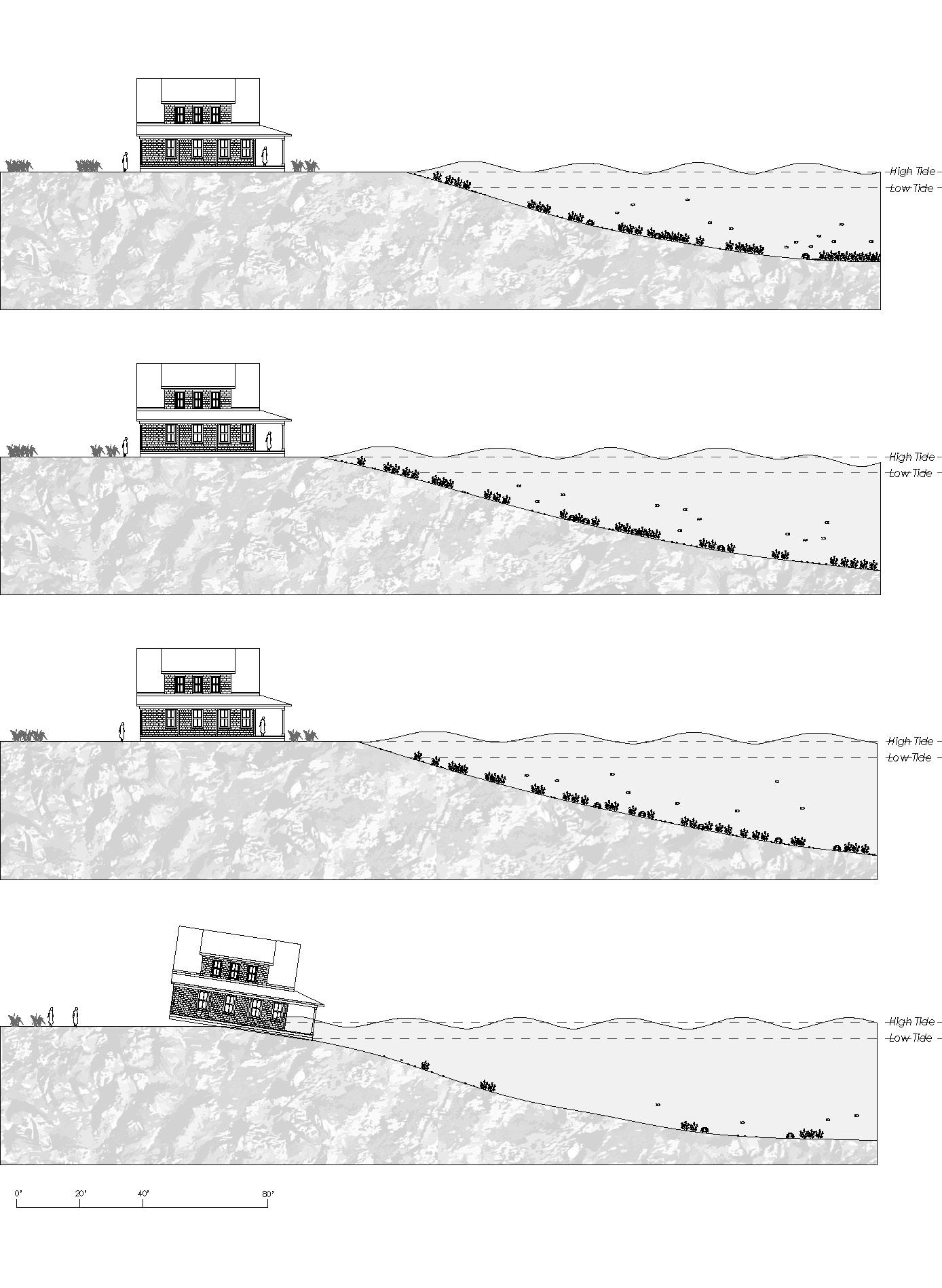
Coastal Erosion Sections
Digital/Rhino and Illustrator
18"x24"
2023
Erosion is a natural process where sand is moved away from the coastal edge by wind and waves. All beaches experience erosion and accretion of sand, but this process is often accelerated through Anthropogenic means, as well as climate change, and sea level rise. As the coast becomes an important source for infrastructure and economic development, it therefore must be armed against natural forces. Otherwise, nature wins and property is lost in the process.
Image
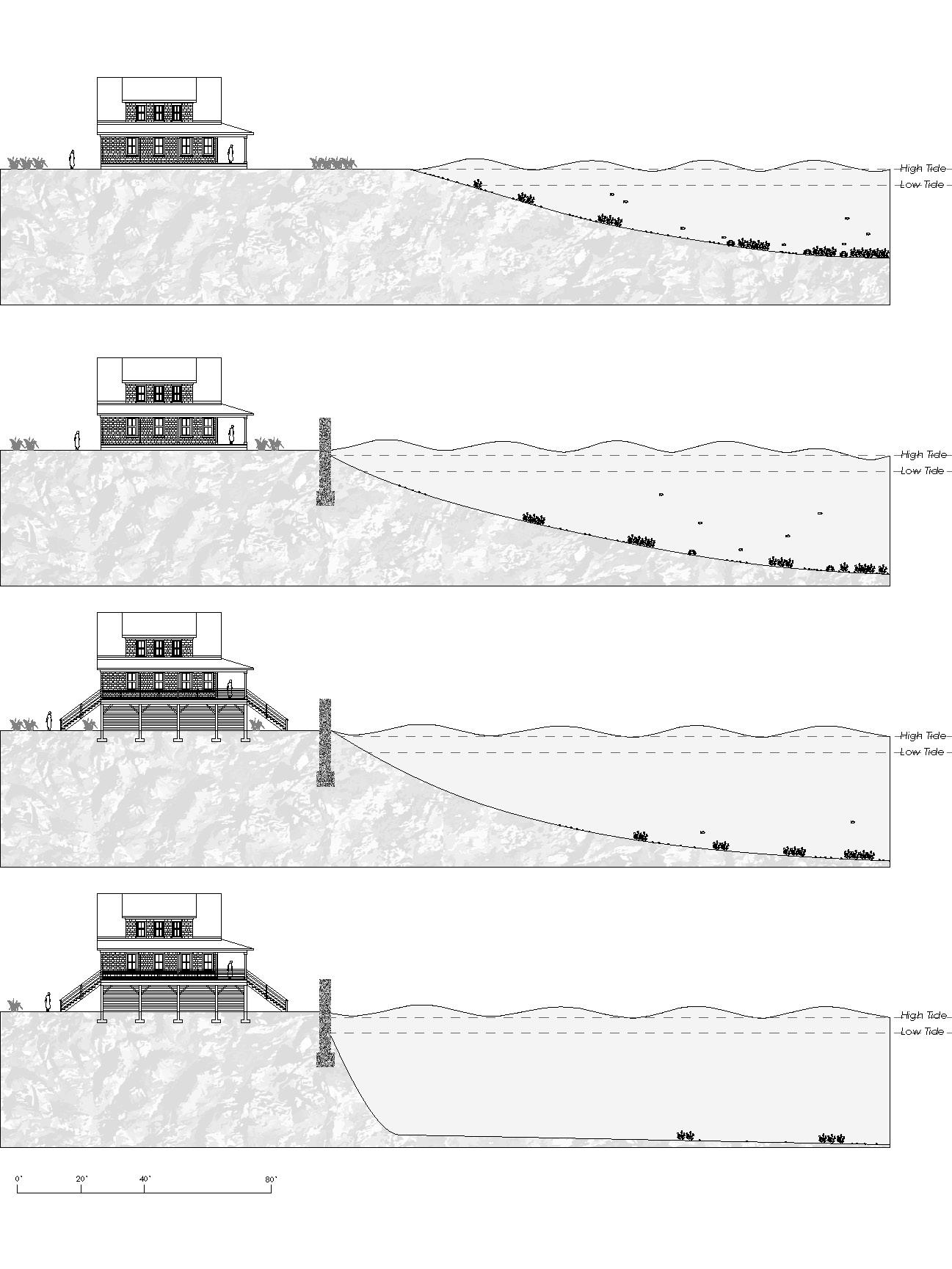
Seawall Sections
Digital - Rhino/Illustrator
18"x24"
2023
The United States Army Corps of Engineers (USACE) deals with coastal erosion by armoring the shore edge with hard, impervious surfaces. One method favored is seawalls, which are mostly made from concrete. Seawalls are costly in construction and maintenance, oftentimes fail, and are known to block access and obstruct views to the shore. Eventually, seawalls erode the sand by the wall and their construction leads to habitat loss.
Image
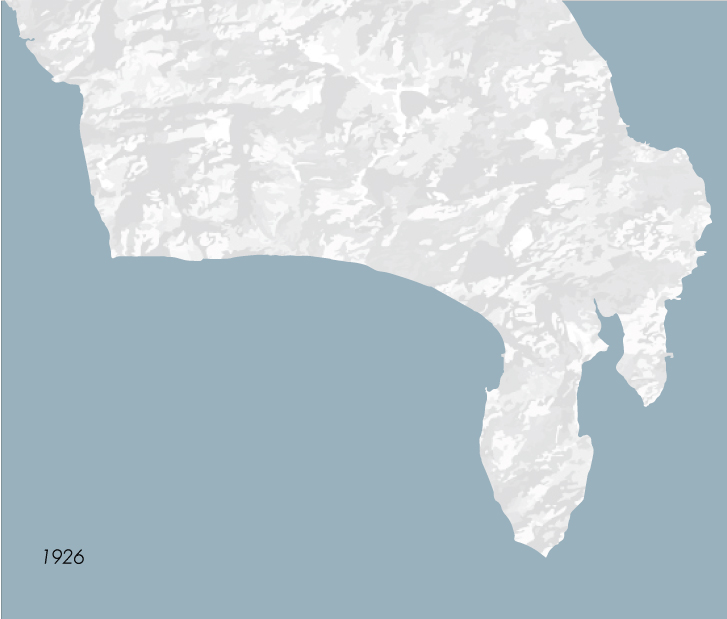
Shoreline Change of Barrington Beach from 1926 - 2021
Digital - Illustrator/Photoshop
GIF
2023
Beach nourishment is considered a soft engineering method, where sand is trucked or pumped from somewhere else, regardless if it is the same sand present on the beach. Once a beach has been “replenished,” this process will need to continue again and again in a few years. Sand is a finite resource, and this method disrupts coastal habitats.
Beaches that are the most viable economically are the ones that get replenished, not the ones that have the highest rates of erosion. Annually, Congress budgets around $150 million for hardened shoreline control measures.
Image
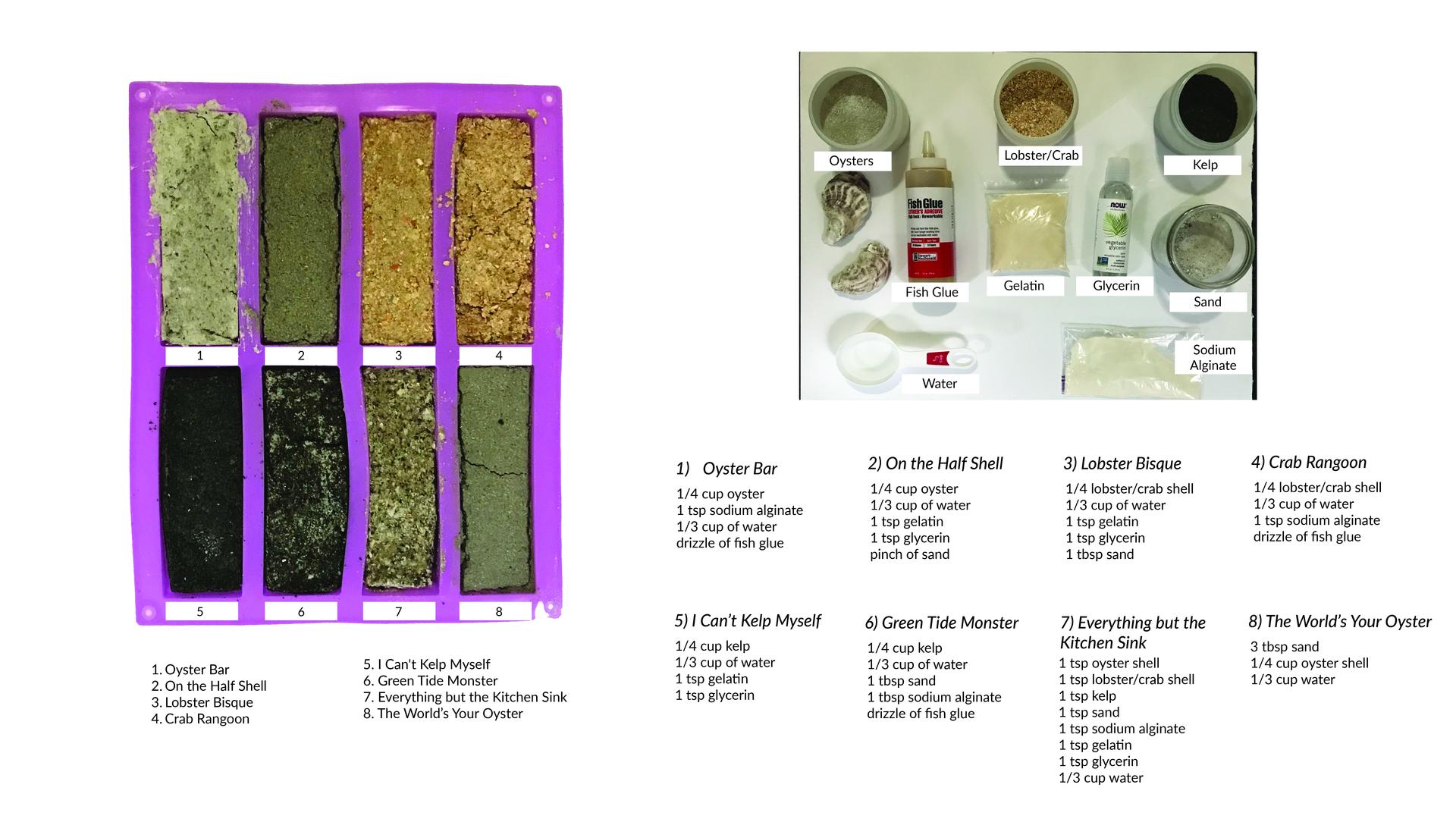
Beach Material Tests
Various - Shells, Seaweed, Sand
26.67" x 15"
2023
Image

Barrington Beach Map
Digital - Illustrator/Photoshop
18"x24"
2023
Barrington Beach, Rhode Island, also known as “RISD Beach,” has experienced much coastal changes throughout the years. Whether we notice it or not, the coastal edge is in constant flux. Narraganset Bay has a rich ecosystem and is considered the largest estuary in New England. The Rhode Island coast has lost over 250ft of beach in the past 50 years, and about 25% of Rhode Island’s shoreline is hardened.
